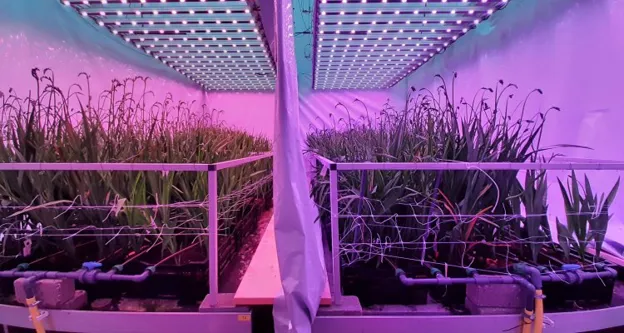More and more crops are switching to LED lamps. They use considerably less energy than SON-T lamps. In the cultivation of freesia, LED has an additional advantage: the lamps hardly produce any heat and therefore fit perfectly with colder cultivation such as that of freesia. The Greenhouse Horticulture and Flower Bulbs Business Unit of Wageningen University & Research investigated which lighting strategy growers can use best to get the most out of LED. For example, freesias turned out to react differently to far-red light than expected.
The effect of day length
The research took place at the research location IDC Led. Among other things, the effect of the day length on the freesias was examined. Two treatments were compared: a longer treatment (16 hours) with a low light intensity (150 µmol/m2/s) and a shorter treatment (12 hours) with a high light intensity (200 µmol/m2/s). The total light sum was the same for both treatments (8.6 mol/m2/day). The second treatment resulted in higher production. That production was even comparable to the production of a higher total light sum with 16 hours of high light intensity.

The impact of color
The study also looked at the effect of different light colors on production. Both a higher and a lower percentage of blue light resulted in a higher production than the usual percentage of blue light. The expectation was that the addition of far red would result in longer flower spikes. This turned out not to be the case. The addition of far red resulted in faster flowering and side shoots higher on the main stem, which resulted in shorter side shoots.
The research into the effect of the light spectrum on freesia is part of the 'LED with the sun' research project and is financed by the 'Kas als Energiebron' program: a program to stimulate the implementation of LED lighting.
Source: wur.nl
